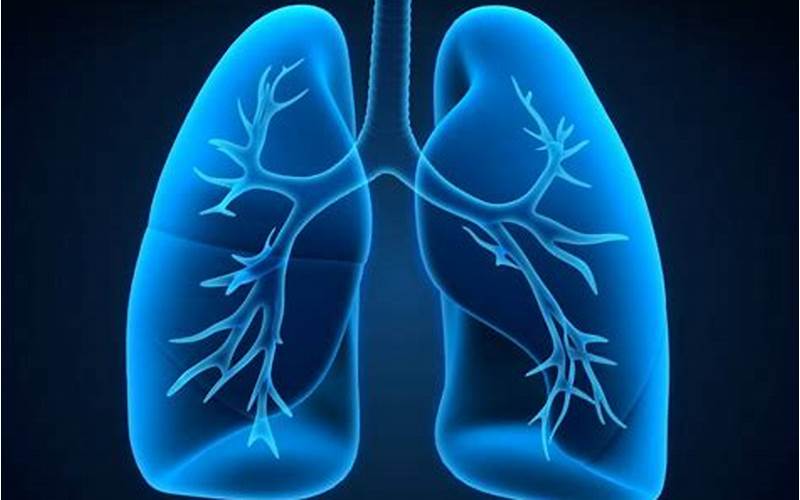Greetings, dear reader! Today, we are going to talk about mesothelioma, a rare but aggressive cancer that mainly affects the lungs, abdomen, and heart. This type of cancer is caused by exposure to asbestos and affects people who work in industries such as construction, shipbuilding, and mining.
Mesothelioma is a complex disease, and there are different types of mesothelioma that you should be aware of. In this article, we will discuss each type of mesothelioma in detail and provide you with all the information you need to know about this condition. Let’s dive in!
Introduction: Understanding Mesothelioma
Mesothelioma is a form of cancer that originates in the mesothelium, a thin layer of cells that surround the organs in the body. This cancer is caused by exposure to asbestos, a naturally occurring mineral that was commonly used in industries such as construction, shipbuilding, and mining. When asbestos fibers are inhaled or ingested, they can become lodged in the mesothelium and cause cancerous tumors to form.
Mesothelioma is a rare cancer that affects approximately 3,000 people in the United States each year. It can take 20-50 years for the symptoms of mesothelioma to appear, which is why it is known as a “silent killer.” The symptoms of mesothelioma can vary depending on the type of mesothelioma and the stage of the cancer.
Now, let’s take a closer look at the different types of mesothelioma.
 Source: bing.com
Source: bing.com
Pleural mesothelioma is the most common type of mesothelioma, accounting for approximately 75% of all cases. This type of mesothelioma affects the lining of the lungs, known as the pleura. Symptoms of pleural mesothelioma include chest pain, shortness of breath, persistent coughing, and fatigue.
| Type of Mesothelioma | Survival Rate | Average Life Expectancy |
|---|---|---|
| Pleural Mesothelioma | 10% | 18 months |
 Source: bing.com
Source: bing.com
Diagnosing pleural mesothelioma can be challenging because the symptoms are similar to those of other lung diseases. The diagnostic process typically involves a physical examination, imaging tests, and a biopsy.
 Source: bing.com
Source: bing.com
Treating pleural mesothelioma typically involves a combination of surgery, radiation therapy, and chemotherapy. The treatment plan will depend on several factors, including the stage of the cancer, the location of the tumor, and the overall health of the patient.
 Source: bing.com
Source: bing.com
Peritoneal mesothelioma is a type of mesothelioma that affects the lining of the abdomen, known as the peritoneum. This type of mesothelioma is less common than pleural mesothelioma, accounting for approximately 20% of all cases. Symptoms of peritoneal mesothelioma include abdominal pain, swelling, and weight loss.
| Type of Mesothelioma | Survival Rate | Average Life Expectancy |
|---|---|---|
| Peritoneal Mesothelioma | 30% | 22 months |
 Source: bing.com
Source: bing.com
Diagnosing peritoneal mesothelioma can be challenging because the symptoms are similar to those of other abdominal diseases. The diagnostic process typically involves a physical examination, imaging tests, and a biopsy.
 Source: bing.com
Source: bing.com
Treating peritoneal mesothelioma typically involves a combination of surgery, radiation therapy, and chemotherapy. The treatment plan will depend on several factors, including the stage of the cancer, the location of the tumor, and the overall health of the patient.
 Source: bing.com
Source: bing.com
Pericardial mesothelioma is a rare type of mesothelioma that affects the lining of the heart, known as the pericardium. This type of mesothelioma is the least common, accounting for less than 1% of all cases. Symptoms of pericardial mesothelioma include chest pain, shortness of breath, and heart palpitations.
| Type of Mesothelioma | Survival Rate | Average Life Expectancy |
|---|---|---|
| Pericardial Mesothelioma | 0% | 6 months |
 Source: bing.com
Source: bing.com
Diagnosing pericardial mesothelioma can be challenging because the symptoms are similar to those of other heart diseases. The diagnostic process typically involves a physical examination, imaging tests, and a biopsy.
 Source: bing.com
Source: bing.com
Treating pericardial mesothelioma can be challenging because the cancer is often diagnosed at an advanced stage. Treatment options may include surgery, radiation therapy, and chemotherapy. However, the survival rate for pericardial mesothelioma is very low, and most patients do not survive beyond 6 months.
 Source: bing.com
Source: bing.com
 Source: bing.com
Source: bing.com
The early signs of mesothelioma can include chest pain, shortness of breath, fatigue, and persistent coughing. However, these symptoms can also be caused by other lung diseases, so it is important to see a doctor for a proper diagnosis.
 Source: bing.com
Source: bing.com
There is currently no cure for mesothelioma, but treatment options such as surgery, radiation therapy, and chemotherapy can help manage the symptoms and slow the progression of the cancer.
 Source: bing.com
Source: bing.com
Diagnosing mesothelioma typically involves a physical examination, imaging tests such as X-rays and CT scans, and a biopsy to confirm the presence of cancer cells.
 Source: bing.com
Source: bing.com
The life expectancy for mesothelioma depends on several factors, including the stage of the cancer, the type of mesothelioma, and the overall health of the patient. On average, patients with mesothelioma have a life expectancy of 12-21 months.
 Source: bing.com
Source: bing.com
Asbestos is a naturally occurring mineral that was commonly used in industries such as construction, shipbuilding, and mining. When asbestos fibers are inhaled or ingested, they can become lodged in the mesothelium and cause cancerous tumors to form.
 Source: bing.com
Source: bing.com
People who work in industries such as construction, shipbuilding, and mining are at an increased risk for mesothelioma due to their exposure to asbestos. Additionally, family members of workers who were exposed to asbestos may also be at risk due to secondhand exposure.
 Source: bing.com
Source: bing.com
The best way to prevent mesothelioma is to avoid exposure to asbestos. If you work in an industry where asbestos is present, be sure to follow safety protocols and wear protective gear.
 Source: bing.com
Source: bing.com
The treatment options for mesothelioma typically include surgery, radiation therapy, and chemotherapy. The treatment plan will depend on several factors, including the type and stage of the cancer and the overall health of the patient.
 Source: bing.com
Source: bing.com
The prognosis for mesothelioma depends on several factors, including the type and stage of the cancer and the overall health of the patient. On average, patients with mesothelioma have a life expectancy of 12-21 months.
 Source: bing.com
Source: bing.com
When asbestos fibers are inhaled or ingested, they can become lodged in the mesothelium and cause cancerous tumors to form. The fibers can also cause inflammation, scarring, and DNA damage, which can lead to the development of cancer.
 Source: bing.com
Source: bing.com
Asbestos is a mineral that was commonly used in industries such as construction, shipbuilding, and mining. Mesothelioma is a form of cancer that is caused by exposure to asbestos.
 Source: bing.com
Source: bing.com
If you have been exposed to asbestos, it is important to see a doctor for a check-up. Additionally, you should inform your employer and take steps to minimize future exposure to asbestos.
 Source: bing.com
Source: bing.com
It can take 20-50 years for the symptoms of mesothelioma to appear after exposure to asbestos. This is known as the latency period, and it can vary depending on several factors, including the type of asbestos and the duration and intensity of the exposure.
 Source: bing.com
Source: bing.com
If you have been diagnosed with mesothelioma, it is important to seek treatment as soon as possible. Additionally, you should inform your employer and consider speaking with a mesothelioma lawyer to discuss your legal options.
 Source: bing.com
Source: bing.com
Now that you know more about the different types of mesothelioma, it is important to take action to protect your health. If you work in an industry where asbestos is present, be sure to follow safety protocols and wear protective gear. Additionally, if you have been diagnosed with mesothelioma, seek treatment as soon as possible and consider speaking with a mesothelioma lawyer to discuss your legal options.
Remember, early detection is key when it comes to mesothelioma. If you have any symptoms or concerns, see a doctor right away.
 Source: bing.com
Source: bing.com
The information in this article is intended for educational purposes only and should not be used as a substitute for professional medical advice. If you have any concerns about your health, please see a doctor.